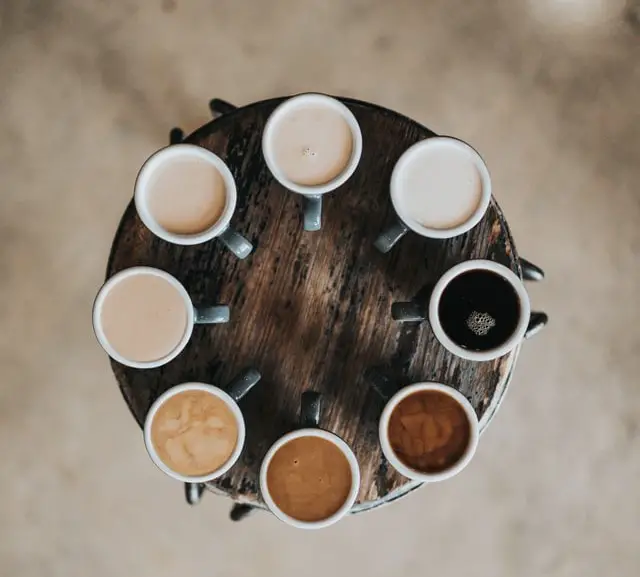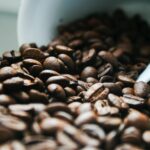In the last few years, coffee drinkers have grown accustomed to seeing small, medium, and large sizing options for their cups. It may seem like a trivial detail, but when it comes to coffee, these new sizing options are important.
If you’re like many Americans, you probably measure your coffee by the cup. You might assume that if a cup of coffee has 200 milliliters of liquid in it, then another cup with twice the amount of liquid (i.e., 400 milliliters) would hold twice as much coffee.
But that’s not necessarily true. The different sizes reflect the variance in standard drinking vessels across different parts of the world. In fact, the smaller sizes were created because Americans tend to drink more out of small mugs than anyone else in the world.
So if you’re reading this article because you just learned that your favorite local coffee shop doesn’t carry a large or an extra-large cup – they only have medium and small – then maybe this info is useful to you!

Coffee Cup Sizes Chart ml
Here is the chart of different coffee cup sizes with their actual volumes in milliliters.
• The standard small coffee cup size is 236 mL. In other words, this size is equivalent to two small coffees.
• The standard coffee cup is equivalent to 305 mL, which is one large coffee.
• A Coffee mug is equivalent to 350 mL, which is halfway between a large and extra-large coffee.
• 1. 5 Large (the standard size in Australia) is equivalent to 473 mL, which is one and a half large coffees.
• 2 Large coffee mug is equivalent to 591 mL, which is two large coffees.
• 3 Large coffee mug is equivalent to 946 mL, which is three large coffees.
What Are the Actual Volumes of Each Size?
The standard coffee mug sizes are marked as 8, 10, 12, 16, 20, and 30 ounces. While some of these sound very familiar, others are completely foreign. These are the standard coffee mug sizes and the actual volume of each mug:
• 8 oz: The standard coffee mug size is 8 oz, which is equal to 236 mL. In other words, this size is equivalent to two small coffees.
• 10 oz: The standard 10 oz coffee mug is equivalent to 305 mL, which is one large coffee.
• 12 oz: A 12 oz coffee mug is equivalent to 350 mL, which is halfway between a large and extra-large coffee.
• 16 oz: A 16 oz coffee mug (the standard size in Australia) is equivalent to 473 mL, which is one and a half large coffees.
• 20 oz: A 20 oz coffee mug is equivalent to 591 mL, which is two large coffees.
• 30 oz: A 30 oz coffee mug is equivalent to 946 mL, which is three large coffees.
Which Brand Serves Which Size?
Here are some international coffee brands and the volume sizes of their coffee mugs:
– Starbucks: – A standard, tall (12-ounce) coffee mug.
– Dunkin’ Donuts: – A standard, large (16-ounce) coffee mug.
– Krispy Kreme: – A standard, medium (12-ounce) coffee mug.
– McDonald’s: – A medium (12-ounce) coffee mug.
– Tim Hortons: – A standard, large (16-ounce) coffee mug.
What Are the Sizes of Coffee Mugs?
A standard coffee cup is 9 oz, while a standard coffee mug is 12 oz. If you are looking to buy coffee mugs, then keep in mind that standard coffee mugs are 12 oz, and a standard coffee cup is 9 oz.
The most important thing to watch out for when buying coffee mugs and coffee cups is the capacity. Most people don’t have any concept of the difference between coffee cups and coffee mugs. The coffee cups are smaller than the coffee mugs, and they hold less coffee.
You can also use a coffee mug for coffee if needed. You just have to make sure that the capacity of the mug is enough for the amount of coffee you need.
Conclusion
Keeping these facts in mind will help you make better-informed decisions when it comes to your daily cup of coffee! Whether you’re making coffee at home or ordering it from a shop, you’ll know what size drink to ask for. And you’ll be able to tell if the shop is trying to short-change you on the coffee!




